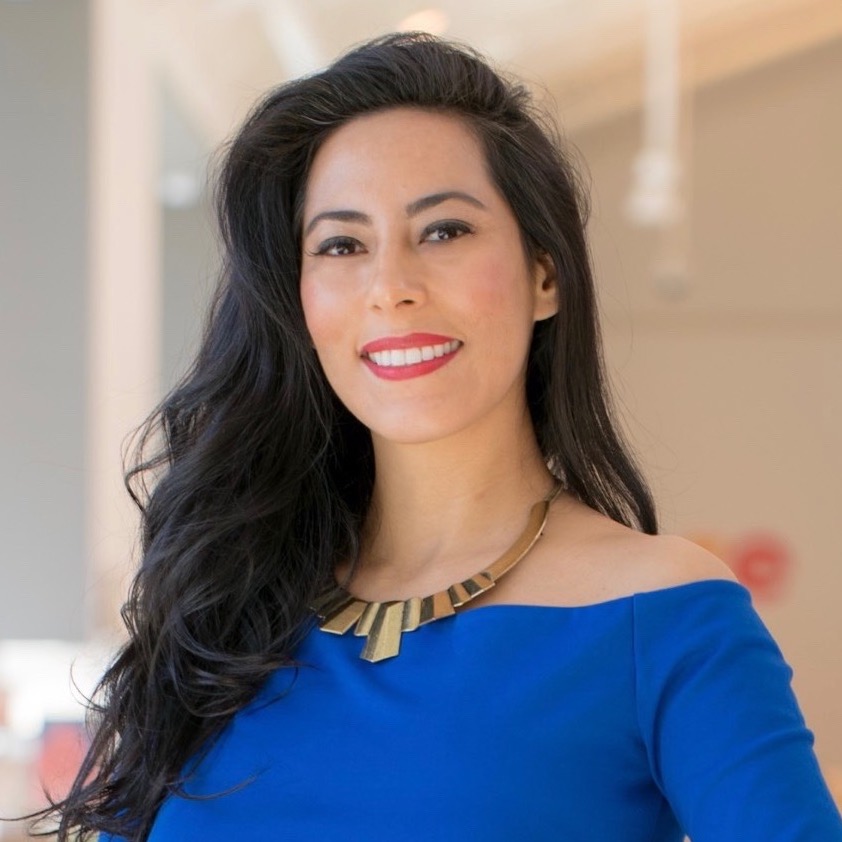When Oprah Winfrey likes what you make, you know you’re in good company. Getting a shout-out in O magazine, not to mention being recognized as a World Economic Forum Young Global Leader and one of Fast Company’s 100 Most Creative People, is impressive – but there are far greater reasons to like Natalia Allen’s new collection. Allen's attention to where the textiles in her designs come from, how the garments are constructed and how each dress is sold has created a new model for sustainable fashion that has made the fashion world take notice.
The simplicity in style of Allen's new seamless collection should not be confused with simplicity in design: There's much more to these little black dresses (which come in multiple hues) than meets the eye. Made by robots programmed to create zero waste, each dress in Allen’s collection is the product of science meeting design. Her garments are precision engineered down to the x- and y-axis, and the design and manufacturing process is more akin to making high-tech gadgets than traditional apparel.
What results are seamless, lightweight, modern dresses that fit like a glove – and make you feel good wearing them, in more ways than one. I spoke with Allen to learn more about what drives her purposefully-created clothes and how her approach to sustainability is to do more with less.
TriplePundit: Your designs are made in the U.S. by robots. What sparked the use of robots, and how is using robots, rather than humans, a more sustainable option for your business?
Natalia Allen: The fashion industry largely ignores three major issues: worker exploitation, excessive waste and product toxicity. The use of robots in our supply chain elevates the quality of work for clothing workers, eliminates a significant amount of waste in the manufacturing process and produces high-quality clothing with desirable attributes. Because we use programmers instead of debilitating rote labor to make our clothes, our clothes are made to specification, and the product is seamless, well fitting and long lasting.
3p: What was your process for choosing and ensuring the sustainability of the textiles in your current collection?
NA: Last season I attended trade events in Florence and New York. I sourced over 100 materials, and compiled and tested each one. I have several criteria, such as aesthetic, color, quality, washability, care requirements and sustainable attributes. I invest a lot to find the right materials. As a result, the collection is becoming known for its great fabrics.
3p: What have you learned about sustainable apparel design and manufacturing since you launched your first line in 2013?
NA: Last year, I was surprised to learn from a New York Times report that a social entrepreneur and missionary started a factory in Bangladesh to produce clothing ethically. However, the pair was pressured into operating dangerously because its clients (large apparel brands) placed new demands for cheap goods at an ever-increasing fast pace. The large brands threatened to take their orders elsewhere if the factory did not cooperate. So, the owners pushed workers and cut corners to survive. This practice ultimately led to one of the most tragic events in the fashion industry.
The case demonstrates that even with the best of intentions from individual players, ethical apparel manufacturing is the result of the complex and interconnected choices of apparel companies, designers, clothing workers, governments and shoppers.
3p: Prior to starting your own fashion line, you advised brands such as Calvin Klein, Donna Karen, Nike and DuPont on sustainable product innovation. From your experience as a design consultant working with global brands, what do you think are some of the advantages – and limitations – of designing more sustainable products for the masses?
NA: Large companies often have a set of systematic practices that are designed to stay the same. However, to be truly sustainable a large company would need to make widespread dramatic shifts to new technologies and comprehensively update its business practices and values. This difficult transformation is in my opinion one of the most significant barriers to progress. Small companies that are able to begin with the most competitive innovations and best practices have an advantage in this respect.
3p: Women all over the world wear your dresses. What do you think drives your customer to purchase your designs? Is sustainability a factor?
NA: We make great clothes, and we try to do it in an innovative and ethical manner. I think that our clients appreciate this. More so, they value the design. Namely, they value the beautiful fabrics, fit and function of every piece.
Images courtesy of Natalia Allen

Nayelli is the Founder & CEO of CreatorsCircle, a resource hub that connects diverse youth with opportunities to create a life of purpose and impact. A trained journalist with an MBA, she also keeps the pulse on sustainable business and social impact trends and has covered these topics for a variety of publications over the past 15 years. She’s a systems thinker who loves to learn, share knowledge and help others connect the dots.














